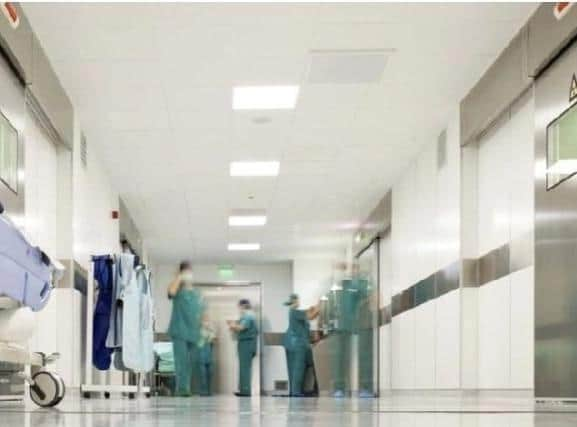Percentage of Covid tests coming back positive more than doubles in Aylesbury Vale ahead of lockdown end date
and live on Freeview channel 276
The latest figures for Aylesbury Vale show that the Covid positivity rate for the area more than doubled in the past seven days.
Figures accurate up to June 1 show that the positivity rate in Aylesbury Vale has risen to 1.7% from 0.7% in just one week.
Advertisement
Advertisement
This marginally ahead of the national average, the positivity rate for the country reached 1.5% in the latest records. This was a jump of 0.6% from the previous week's data where


This percentage is still below the World Health Organisation (WHO)'s 5% threshold. The organisation advises that if that percentage is passed lockdown shouldn't be lifted for two weeks in those regions.
Currently, 13 councils in the UK have a Covid positivity rate that would be classified as 'out of control' all of those are in the North West.
Blackburn with Darwen has the highest percentage of positive Covid tests recorded at 13.6%, nearby Bolton is also in the top three councils with 9.6% of tests administered returning positive.
Advertisement
Advertisement
The North West is the part of the country that has seen the most clusters of the Delta variant. Areas where Covid case numbers have spiked have been subject to surge testing which may have increased the number of positive cases that have been identified.
The data recorded by the government removes duplicates to show the percentage of individuals who returned one positive test in a week.
Aylesbury's region overall has the third-lowest infection rate. The South East of England on average has a 1% positivity rate, the two lower areas were the South West and East of England.
The North West's rate sits at 4.3% and is closing in on the 5% threshold.
Advertisement
Advertisement
Prime Minister Boris Johnson has said there is “no question” that coronavirus infections have increased in England.
“We always knew that was going to happen,” he added.
“What we need to work out is to what extent the vaccination programme has protected enough of us, particularly the elderly and vulnerable, against a new surge.”
What does WHO say?
WHO set out its 5% threshold in May last year, long before effective vaccines had been developed and rolled out.
The positivity rate threshold should be used to supplement estimates of the R-number – the rate of the virus’s transmission in communities – to assess whether the epidemic is under control, it said.
Advertisement
Advertisement
In England, 76.4% of people aged 18 and over had had at least one vaccine dose as of 6 June. Across the UK, the figure is 76.8%.
NationalWorld asked WHO if successful vaccination programmes would affect its guidance on test positivity. It has not yet responded.
What does the Government say?
Not much.
NationalWorld approached the Department of Health and Social Care about the latest data.
We asked if it recognised or took the WHO threshold into account, and whether the situation in the North West was cause for concern.
Advertisement
Advertisement
It passed our query to the Cabinet Office, which simply said before taking each step the Government would review the latest data on the impact of the previous step against four tests.
These are the continued success of the vaccine programme, whether evidence shows vaccines reduce hospitalisations and deaths, whether infection rates risk a surge in hospitalisations that would put unsustainable pressure on the NHS, and whether its assessment of the risks have been fundamentally changed by new variants of concern.
It did not address the 5% threshold directly.